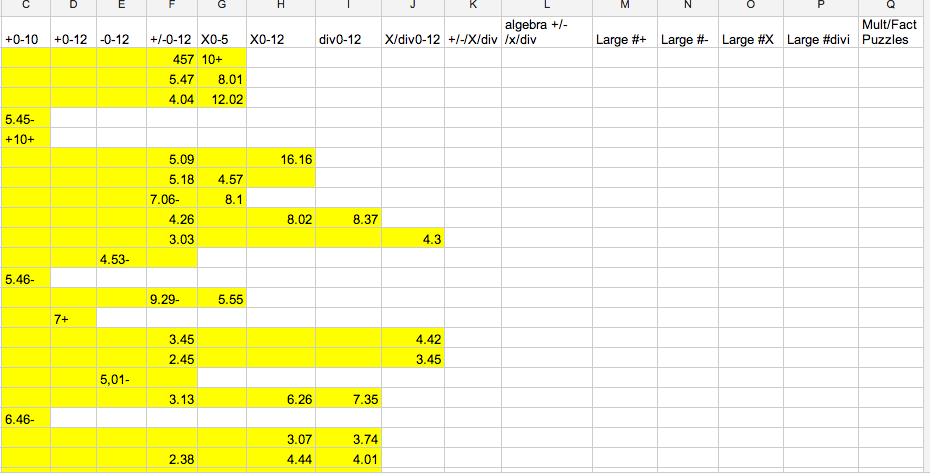Posted by Atsumori. Category:
Self Reflection Journey
One of my greatest challenges during the school year is coordinating efforts effectively with the multiple educators I work with.
The new Massachusetts' Teacher Evaluation Rubric stresses the importance of sharing data with collaborating educators, students, and families in an effort to teach children well. Hence, it's time to establish a collegial collaboration communication system with focus and strength.
The challenge, as I outlined in this post, is time and numbers. Since I'm mainly on task with students during the school day, there is not much time to talk and plan with collaborators, and since there are many collaborating teachers, the number of people to collaborate with further complicates this goal.
Hence in an effort to coordinate our efforts to best meet the needs of each student, I plan to do the following:
1. Meet with each collaborating teacher prior to, or at the start of, the school year. Use a chart to identify with each teacher the following information:
- Which students in my class are you working with?
- Specifically when are you working with them?
- What are my responsibilities with regard to annual review meetings and family meetings, and when will those meetings occur?
- What are your specific targets with regard to the children you work with?
- What is your preferred way to communicate on a regular basis i.e. meetings, email, phone calls, etc?
- What communication pattern will serve our work well?
- Create a student coaching spreadsheet for each child.
- All collaborating teachers contribute to the coaching spreadsheet regularly to identify goals, successful strategies, needs, and successes.
- Coaching notes are written with the knowledge that students, families, and leader/evaluators will also be able to access the documents and notes.
- Use coaching documents as a resource for family, student, and evaluation meetings.

 |
| Example of a Class Spreadsheet Without Titles/Names |
- Analyze instructional efforts.
- Determine individual, small group, and class goals.
- Make curricula decisions.
Establishing a three-part communication system like this prior to, or at the start of, the school year means that you won't be scrambling for information when it's time to make decisions, conference with students and families, collaborate with colleagues, or share information with evaluators and leaders.
In Massachusetts, the New Educator Evaluation System, clearly points to this activity as one way to teach children well. Hence, creating these systems now will set the stage, in part, for a successful school year ahead.










0 comments:
Post a Comment